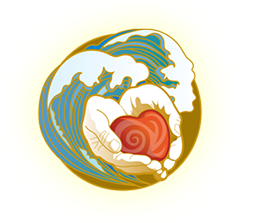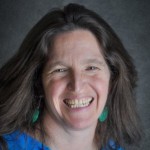As someone with over two decades of experience in the field of Biodynamic Craniosacral Therapy, I have gradually taken on more roles. I began as a student, became a practitioner, then a teacher and most recently in 2015 the school owner of the School of Inner Health in Denver. The only one of these roles I don’t officially have anymore is the student role; yet, rarely a day goes by when the inherent Intelligence of this field doesn’t teach me something profound.
Having multiple roles is not easy; in fact, it is something I have steadfastly avoided professionally until now. Separating my roles has helped me function effectively as an adult and differentiate from my childhood when I had multiple roles that were too big and that I didn’t want. But owning a school and teaching there have forced my hand – the two roles blend. The difference from my childhood and now is that the roles that I have simultaneously are ones I have chosen and am experienced enough to assume.
I now recognize that until these dual roles called me, I had been more “comfortable” off my midline letting others make decisions, because that way I didn’t have to be responsible. Of course, sidestepping my authority is a false comfort, but the idea of disappointing or hurting someone else has historically immobilized me. The only way to mobilize back then was to manage the hurt or disappointment myself. Looking back, it seems crazy that I structured my life to attend to the needs of others before my own; yet, in challenging moments that default strategy often feels preferable.
But these roles don’t allow me the luxury of my preferences, especially if those preferences come from my wounds. The strategy of staying off my midline is not only ineffective as a teacher or administrator, it is untenable. These roles require flexibility and humility, steadfastness and confidence in equal measure. This means that I must be able to be uncomfortable and sometimes make unpopular decisions, or decisions whose basis only I understand. By holding me on my leading edges, these roles both request and endlessly teach me new methods for differentiation and self-regulation.
The ability to move between states is a nervous system skill, as is the ability to shift roles. Having multiple roles is still incredibly challenging for me. But I have found that when I follow the same rules that I give myself in sessions – slowing down, finding my midline, listening to myself first – then I can make firm decisions and set clear boundaries. When I take a pause and recognize which role I’m playing in the moment, I’m able to fulfill it more thoroughly. This comes as no surprise on one level as orienting to ourselves first is the primary skill required of all of us as practitioners. It is our orientation to the ground that allows our clients to soar.
To maintain a position of authority in the classroom and school, I have learned to require that students be able to shift roles between client and practitioner appropriately. Too often I have seen the training environment fulcrum around the care of one or two students who struggle to maintain enough self-regulation to participate fully, and I have made a commitment to myself to make the ability to maintain a student role a prerequisite for the full foundation training. I have recognized that for me to hold the whole class well, my attention can’t be over-focused on any one person too often.
Being a teacher and administrator have taught me to trust myself more and to listen more fully to my lack of trust or safety when it arises. Trusting myself when what I sense is not sensed by others is a challenge, but is that not one of the challenges that this work demands of its practitioners repeatedly? We are asked to trust in our own knowing and our experience with the innate Intelligence in the body in every session and to court the deeper presence of well-being in our clients, especially when it is hidden from them.
Like everyone, my ability to fulfill any of my roles well varies. I have had to back up, find my midline and change course. I have had to make repair and acknowledge my blind spots. I have had to trust my bigger vision even when it conflicts with the requests of the moment. The roles of teacher and director require me to be honest and at the same time learn not to share everything. For example, I must be willing to see my own triggers and not override them while at the same time maintaining my role and not sharing too much of my personal history. In an addition to my work in the BCST field, I have decades of experience in conflict resolution. But that doesn’t mean I never create conflict or that I can always resolve them. The school administrator role is a lot like being a parent. It is more challenging and rewarding than I ever thought possible. I am constantly confronted with both opportunities to make repair honestly, which can lead to a better outcome and situations where I must accept different outcomes than the ones I had hoped for. The necessities of my roles have called the health in me forward, even when my wounds seem insurmountable. They have created welcome and healing differentiation from past insecurities and traumas while simultaneously giving me access to the gifts in my ancestral lineage.
While I have only been moving between the teacher and director role for a few years, I know I will be doing this dance for the rest of my professional life. The journey has already grown me into a more substantial and capable human being. The challenges are many, but the blessings are many more. The roles any of us take on that make a difference in the world are neither easy nor comfortable, and they are not supposed to be. For if we are to hold the precious timeless possibility of a better world in our hands, we must stretch endlessly. We can’t rest in the convenient or familiar and expect change. Instead, we must throw our hats into the ring and be willing to wear them all!
Also published on Medium.


